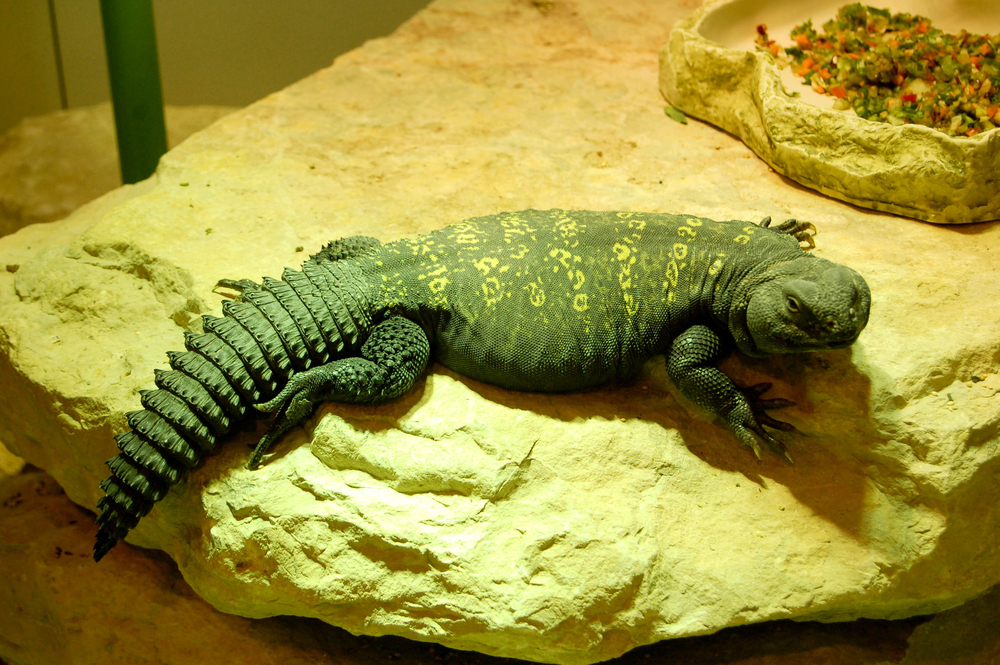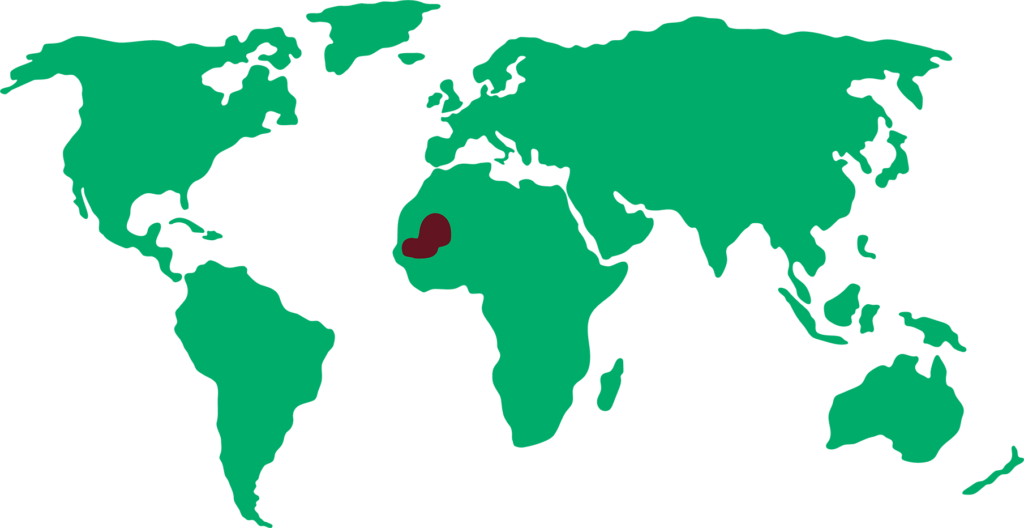MALI UROMASTYX
Uromastyx dispar maliensis

LENGTH

35 cm
WEIGHT

1 kg
LIFESPAN

15 years
The Mali uromatyx, also known as the Mali spiny-tailed lizard, is a subspecies of Uromastyx dispar that belongs to the family Agamidae. It is native to West Africa, specifically Mali, and is known for its characteristic sharp-spined tail.
General characteristics
It is a medium-sized lizard with a wide body and a short, thick tail. As its name suggests, it has spines on its tail, which it uses to attack when it feels threatened.
The body is flattened dorsoventrally to allow it to bury itself in the sand to protect itself from the extreme heat of the desert. The skin is thick with large, smooth scales on the head. It has a prominent dorsal crest, which is more pronounced in males. The toes are stout and strong with sharp nails for digging in the sand and climbing rocks.
They have a striking and varied colouring. They can be yellow, orange, brown or grey, with dark spots or bands on the dorsal side.
Feeding
They are mainly herbivores, although they sometimes eat insects. They obtain most of the water they need from the vegetation they eat.
Behaviour
The Mali spiny-tailed lizard is a diurnal lizard and is active during the cooler hours of the day. In warmer weather, they hide in the shade or bury themselves in the sand.
Although generally solitary, they can be territorial and will confront other members of their species during the mating season or when competing for limited resources.
These lizards are adept at climbing and burrowing and can move nimbly across desert terrain. They move in a distinctive way, with stiff legs and wide, flat feet to adapt to the uneven ground surface.
When they feel threatened, they may swing their tails towards each other with great speed, usually accompanied by whistling.
Reproduction
It is an oviparous species that can lay between 4 and 24 eggs after mating. The female leaves the eggs in a nest dug in the ground and covers them with sand so that they can incubate on their own. This process lasts approximately 4 months.
Threats
In their natural environment, one of the greatest threats is the degradation and destruction of their habitat due to human expansion, agriculture, urbanisation and mining.
Climate change also poses a threat to them, as extreme weather patterns, drought and rising temperatures may affect their ability to survive in their natural habitat. On the other hand, there is also illegal hunting and trade in this species for sale as exotic pets.
Distribution
They are found in north-west Africa, specifically in the Republic of Mali and in the south-west region of Algeria.
They live in desert and semi-desert areas with very high daytime temperatures and relatively low night-time temperatures. They can often be found in areas with sparse vegetation and rocks for hiding and tanning.

Did you know?
Uromastyx comes from the ancient Grigo language and means “tail” and “whip”.
Despite its appearance, it is a quiet and shy animal.
They can store water in their bodies to survive in arid deserts where water is scarce.
Conservation status
